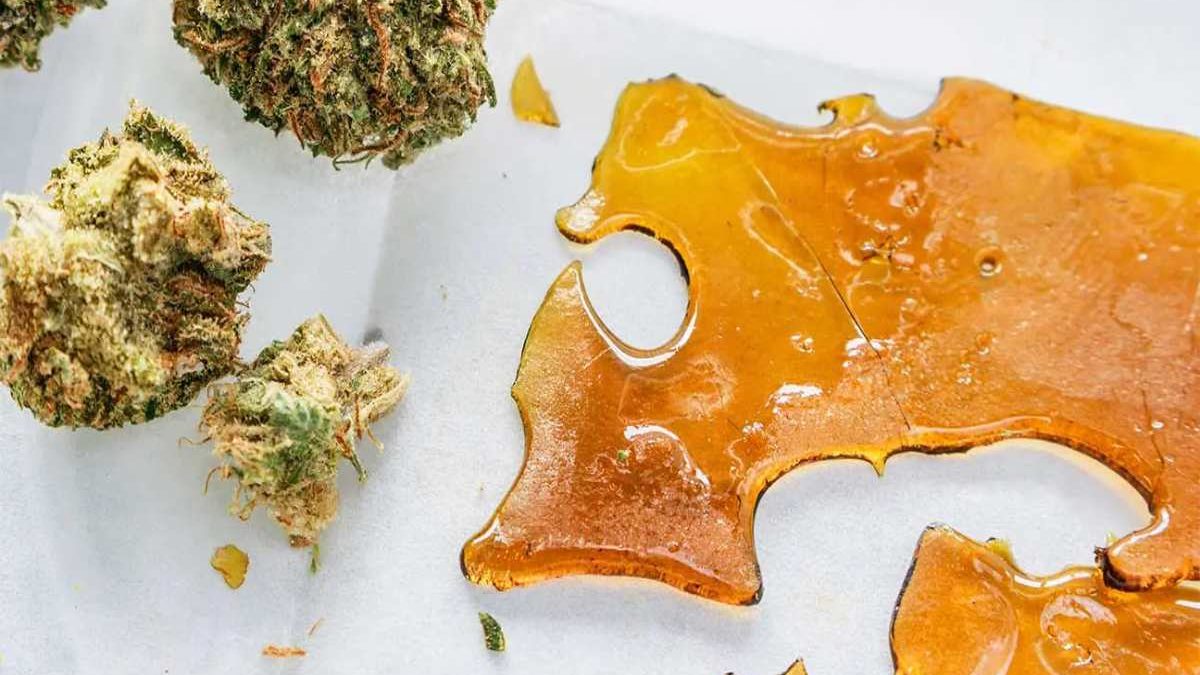When a new kind of cannabis concentrate first emerged called “shatter”, it likely raised eyebrows due to its name alone. This powerfully concentrated extract differs dramatically from traditional marijuana in appearance and potency.
As more turned to this new and appealing substance, some unfortunate experiences also occurred, raising unanswered worries. In light of open yet pressing health queries, we aim to share what’s been reliably learned so far from science regarding shatter’s proven risks.
Table of Contents
What Exactly Is Shatter?
Made through a solvent-based extraction process, shatter is a highly concentrated cannabis extract appearing as an amber-colored resin. It contains very high amounts—sometimes greater than 90%—of THC, the main psychoactive compound in marijuana.
This concentrated form allows someone using shatter to feel its effects a lot faster than when smoking regular marijuana. However, such a powerful concentration likewise multiplies any potential health effects.
Possible Short-Term Side Effects
A number of temporary side effects may occur after using shatter. They include increased heart rate, anxiety, trouble concentrating, and impaired coordination and balance.
While effects differ per person and situation, it’s good knowing these potential outcomes in advance, so you can prepare and watch out for yourself and friends when partaking. Staying hydrated and practicing harm reduction helps many roll safely with whatever they choose.
Long-Term Health Questions Remain Unanswered
Compared to decades of tobacco smoking research, very little is understood about long-term shatter or concentrated cannabis use, leaving many health questions unanswered. We simply lack data on multi-year, regular use impacts.
Some risks to lung or mental health may rise with extremely frequent inhalation of pyrolyzed plant materials, but we have no proof either way at this point in time. Responsible individuals weighing all factors can only make the best choice armed with present facts, not fears.
Addiction Concerns
While not considered physically addictive like heroin or alcohol, cannabis use can lead to dependency for some due to its effect on the brain’s reward system. This risk likely grows with more potent products activating more cannabinoid receptors per use.
Withdrawal symptoms do occur when cutting back after long periods of regular shatter consumption. These may include mood issues, sleep problems, and cravings – so it can prove challenging stopping even for those wanting to.
As with most things, moderation and self-awareness safeguard fulfillment without harm.
Safety Guidance If Choosing to Partake
For individuals after reduced-risk enjoyment, experts advise starting with tiny amounts, going slow, and being in a comfortable setting with a trusted company nearby. Avoiding alcohol and other substances helps ensure a clearer experience, as harmful interactions do exist.
When obtaining concentrates, verifying quality and accurately stated THC percentages from a legal provider puts client safety first as well. An informed populace makes thoughtful choices aligned with their own values and well-being.
The Need For Compassion
Whatever one’s views, showing empathy and avoiding stigma creates the best environment for open discussion. Some find shatter effective relief from pain, mental health issues or other ailments, so we must respect each person’s journey.
Ongoing research and regulations may evolve to maximize benefits, mitigate risks and respect rights according to community standards. In the meantime, promoting understanding ensures healthier outcomes.
In Conclusion
While open questions remain on shatter and other novel cannabis products, ongoing research aims to shed light on both benefits and risks. Staying in the know yields the clearest perspective regarding any emergent drug. For individuals exploring shatter, stay informed and make sure to weigh your options in light of what we’ve discussed before indulging.

